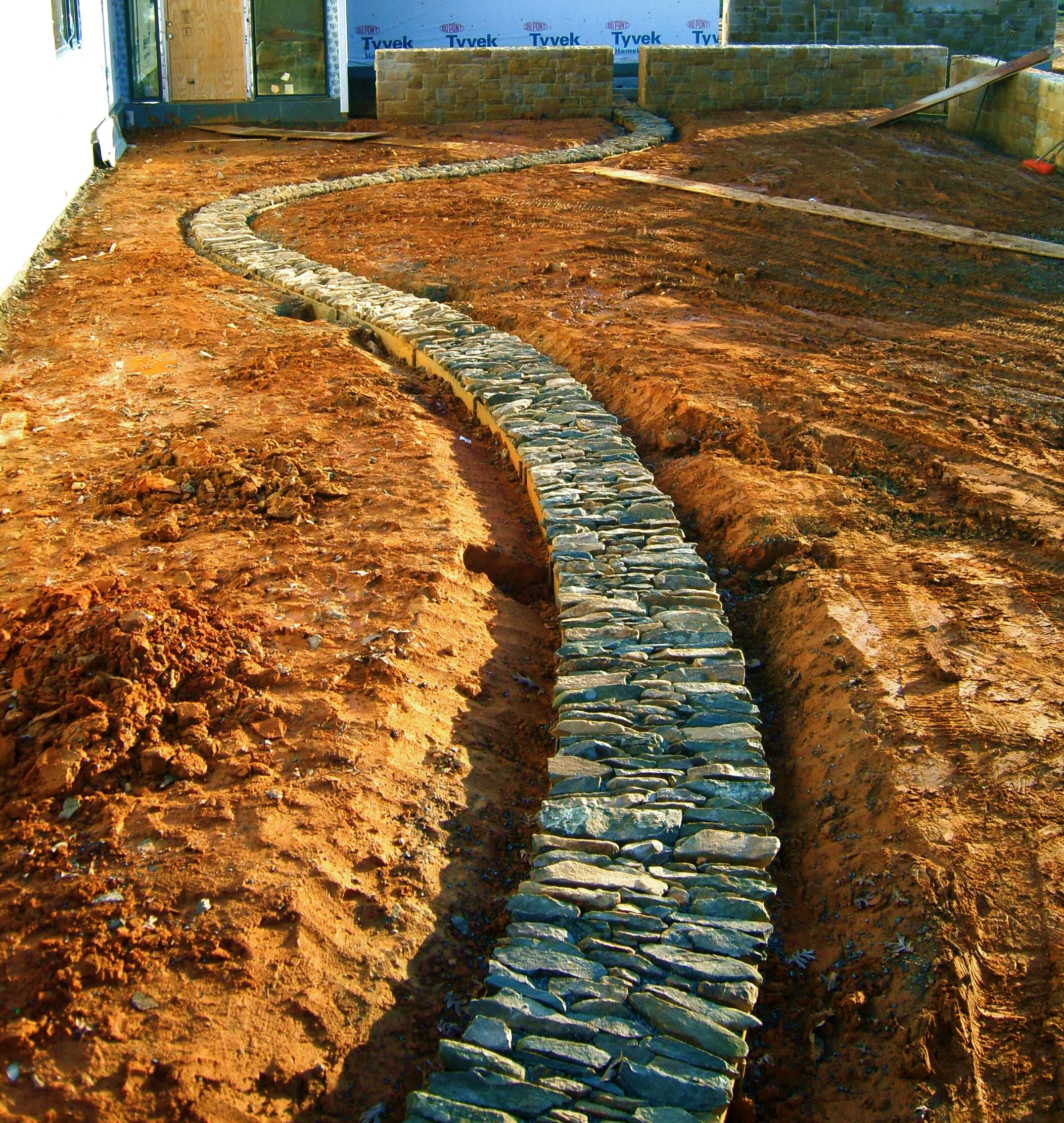
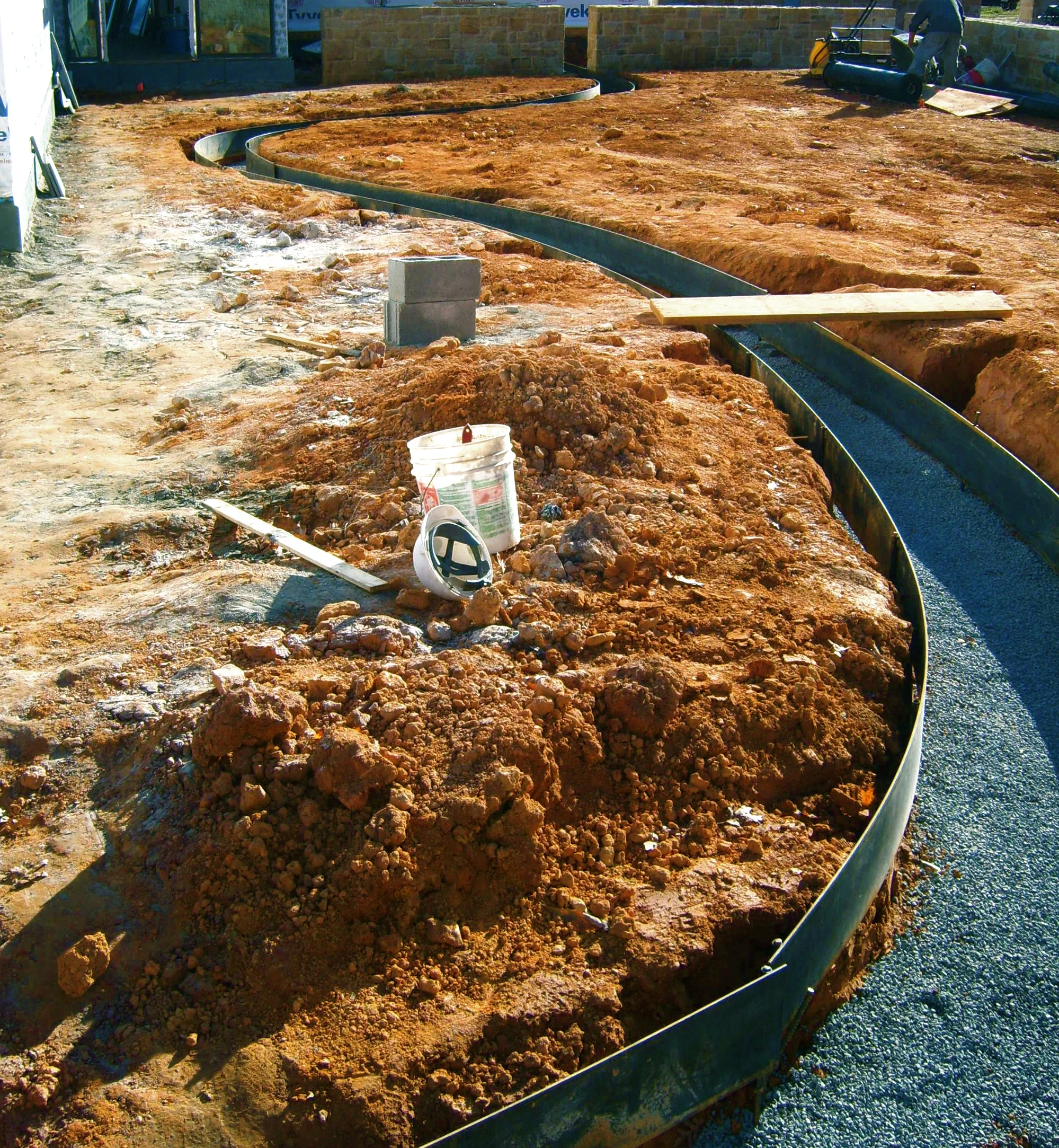
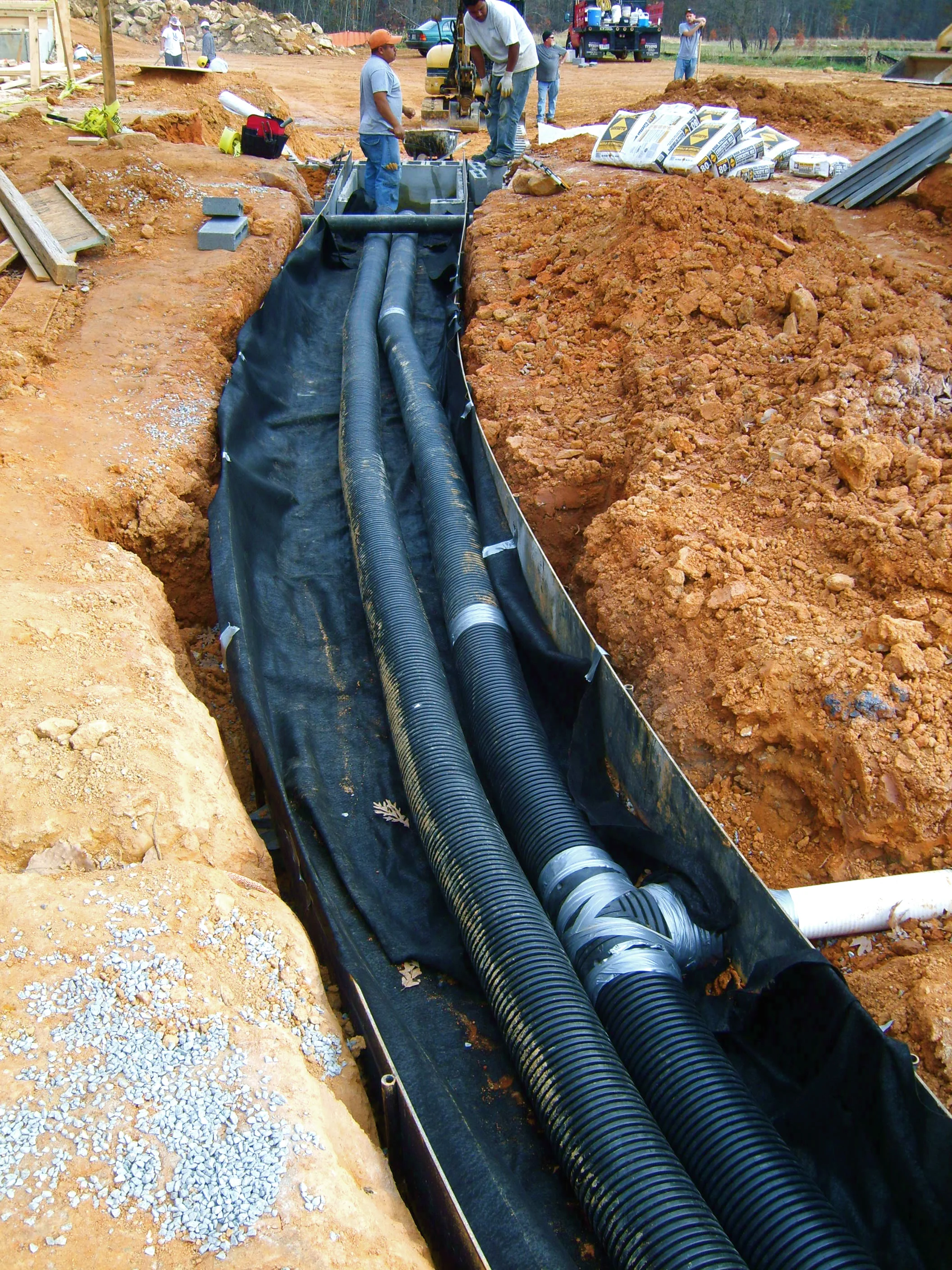
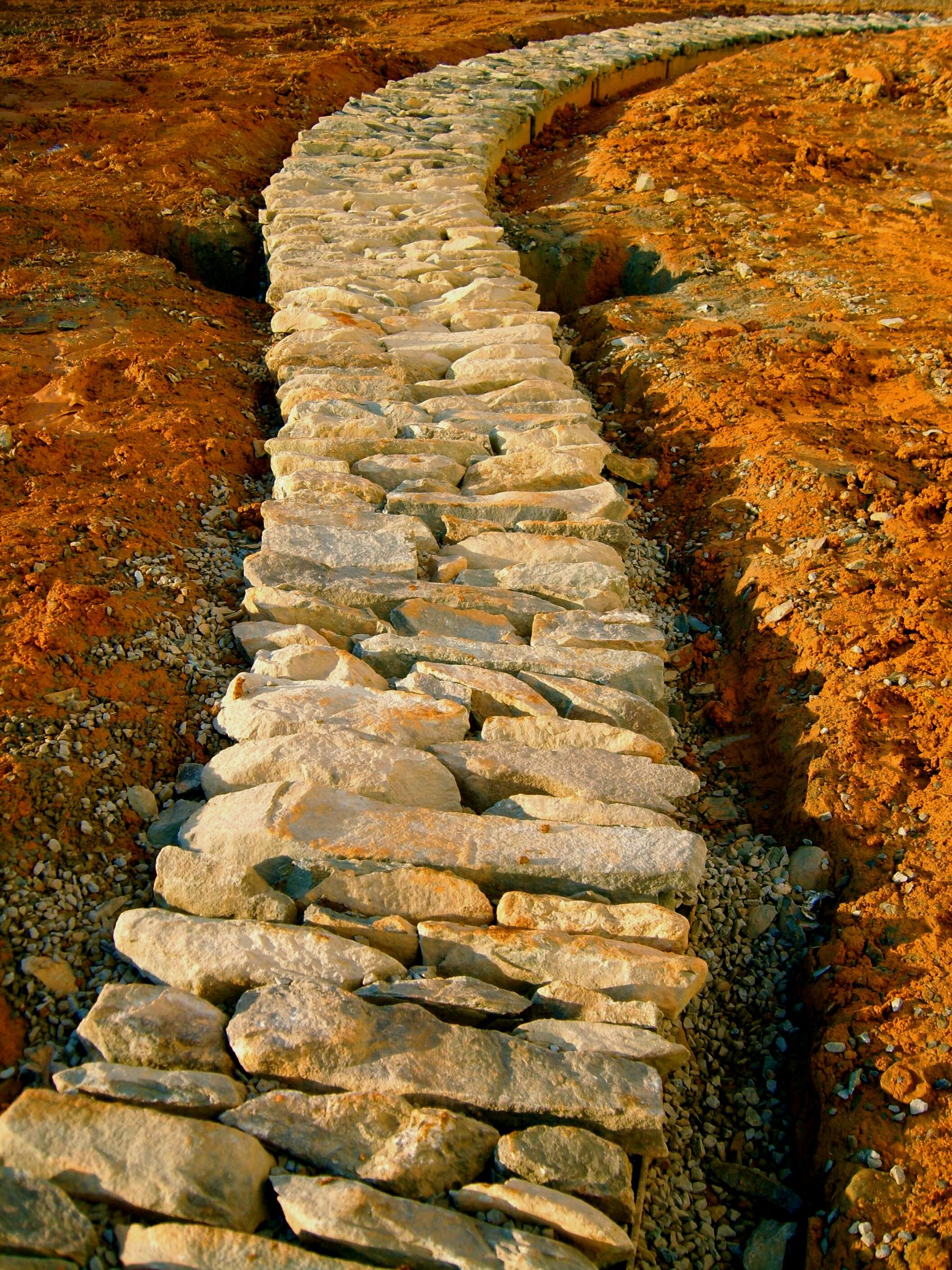

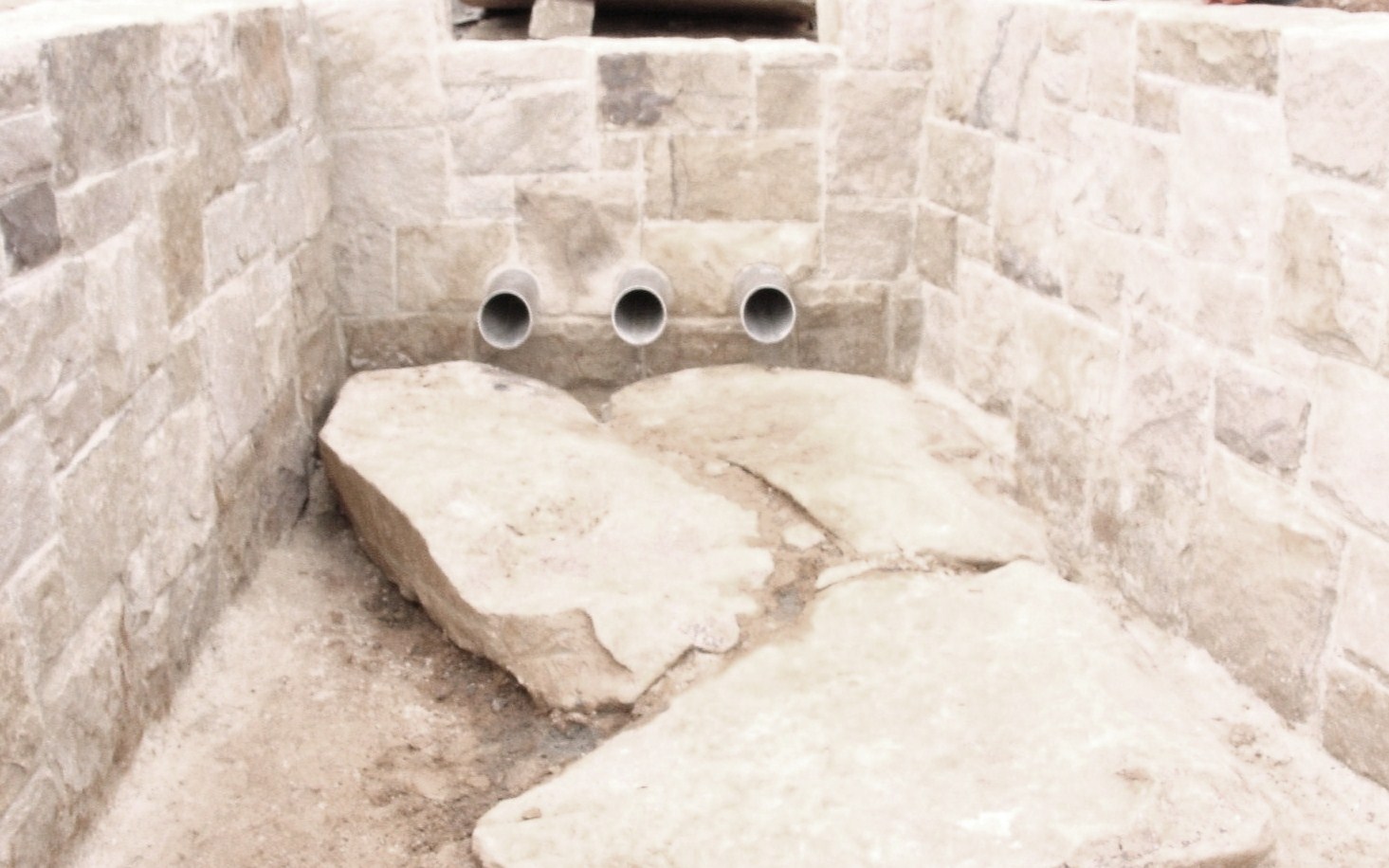
This feature that I built was part of a project by my friend’s company in Maryland for a multi-million dollar project in Bluemont, Virginia. It’s a 150 linear-foot long Stone Rill, a "top-dressing" for a rain catchment and drainage system underneath. it catches and directs all the water from the roofs and from around the property and leads it into a natural swale that goes to a pond. One non-perforated pipe carries all the rainwater from the roofs’ surface. The perforated pipe absorbs any excess ground water. About 4 tons of field stone was collected from around the 500-acre property.
This feature that I built was part of a project by my friend’s company in Maryland for a multi-million dollar project in Bluemont, Virginia. It’s a 150 linear-foot long Stone Rill, a "top-dressing" for a rain catchment and drainage system underneath. it catches and directs all the water from the roofs and from around the property and leads it into a natural swale that goes to a pond. One non-perforated pipe carries all the rainwater from the roofs’ surface. The perforated pipe absorbs any excess ground water. About 4 tons of field stone was collected from around the 500-acre property.